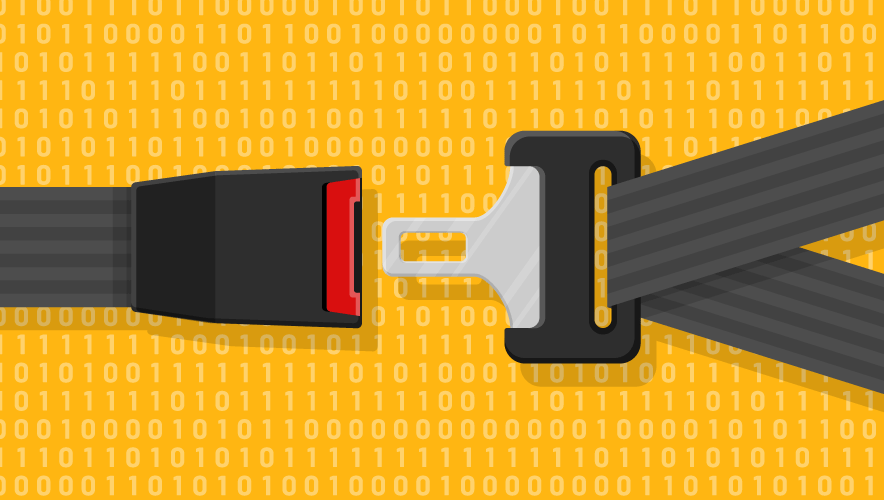Executive Protection in the Age of Technology: Addressing the Risks
Executive protection (EP), in its original form, is purely physical. Over the years, however, it has evolved dramatically. Today’s understanding that prevention is the primary key has forever changed the traditional approach.
As technology advances, the line between physical security and cybersecurity is becoming more blurred, exposing executives to numerous cyber threats that can result in physical vulnerabilities. And the risk of cyber threats can range from hacking of personal devices to surveillance via bugs in homes, vehicles, and offices.
Adapting to Smart Vehicles
With the increasing presence of smart vehicles on the roads, it is inevitable that EP teams will need to adapt and incorporate this technology into their operations. As with any new technology, however, smart vehicles also introduce new risks and vulnerabilities that need to be addressed.
SponsoredInside the Shadows of Alt-Tech Social Networks: The New Haven for Threats Against ExecutivesIn recent years, criminals and fringe groups have started moving to a growing collection of “alt-tech” social networks. And as a result, these communities have become breeding grounds for doxxings, false rumors, and violent extremists – posing a serious risk to executives and high-ranking employees. So how do protectors respond to this threat? |
One such risk is the potential for vehicle hacking by attackers. As smart vehicles become more connected and reliant on technology, they also become more vulnerable to cyberattacks. The number of automotive API attacks increased by 380 percent in 2022, according to an annual vehicle cybersecurity report.
Hackers can target vehicles with malware or other types of attacks, allowing them to:
- Take control of the vehicle
- Monitor the movements of the occupants
- Even cause accidents or other disruptions
As EP professionals, it is our responsibility to understand these new risks and to work with clients to identify appropriate countermeasures. This might include the implementation of advanced security measures such as firewalls, intrusion detection systems, and other network security protocols.
It might also involve training personnel to recognize and respond to potential cyber threats or partnering with experts in cybersecurity to provide additional support and expertise.
Implementing New Protection Roles
The increasing frequency of cyberattacks and data breaches means EP must incorporate cyber threat mitigation as a core component of risk management. This inclusion may also introduce a new core position within EP teams: executive protection technology officers (EPTOs).
The role of EPTOs is to mitigate cyber threats to cover the gaps in protection. EPTOs can work to ensure that executives are protected from cyber threats in more situations than dedicated IT and technical surveillance countermeasures experts can offer, both at home and while traveling.
As the integration of technology and security becomes more intertwined, it is crucial that EP adapts to keep up.
Education and Awareness
In addition to these solutions, it is also important to educate clients and other stakeholders about the potential risks associated with smart vehicles. Many individuals and organizations may not be aware of the risks associated with vehicle hacking or other types of cyberattacks, and it is our responsibility to ensure that they are informed and prepared.
Of course, it is important to note that technology is not a panacea for all the risks associated with EP. Emerging technologies can also be powerful tools for enhancing security. But they must be used in conjunction with traditional physical security measures and a deep understanding of the threat landscape.
The evolution of technology has fundamentally changed the approach to executive protection.
In conclusion, the evolution of technology has fundamentally changed the approach to EP, and with it, the risks and vulnerabilities associated with the practice. The integration of smart vehicles and the increasing frequency of cyberattacks and data breaches have blurred the line between physical security and technology. This requires executive protection professionals to adapt and incorporate advanced security measures to protect their clients from potential threats.
This may include the introduction of new core positions within EP teams, such as EPTOs, who can work to mitigate cyber threats and cover gaps in protection. Education and awareness about the risks associated with emerging technologies are also essential components of effective EP.
As technology continues to evolve, it is crucial for EP professionals to stay informed, proactive, and adapt to keep up with the rapidly changing landscape.
Daniel Weil is CEO of Security Crisis Solutions (SCS), a close protection and special ops company based in Tel Aviv, Israel. He has more than 18 years of experience in the security sector, including in the IDF Special Forces elite unite Dovdevan. Weil is the chair of the ASIS Israel Chapter and an active Overseas Security Advisory Council member.














